Btg1 is Required to Maintain the Pool of Stem and Progenitor Cells of the Dentate Gyrus and Subventricular Zone
- PMID: 22969701
- PMCID: PMC3431174
- DOI: 10.3389/fnins.2012.00124
Btg1 is Required to Maintain the Pool of Stem and Progenitor Cells of the Dentate Gyrus and Subventricular Zone
Abstract
Btg1 belongs to a family of cell cycle inhibitory genes. We observed that Btg1 is highly expressed in adult neurogenic niches, i.e., the dentate gyrus and subventricular zone (SVZ). Thus, we generated Btg1 knockout mice to analyze the role of Btg1 in the process of generation of adult new neurons. Ablation of Btg1 causes a transient increase of the proliferating dentate gyrus stem and progenitor cells at post-natal day 7; however, at 2 months of age the number of these proliferating cells, as well as of mature neurons, greatly decreases compared to wild-type controls. Remarkably, adult dentate gyrus stem and progenitor cells of Btg1-null mice exit the cell cycle after completing the S phase, express p53 and p21 at high levels and undergo apoptosis within 5 days. In the SVZ of adult (two-month-old) Btg1-null mice we observed an equivalent decrease, associated to apoptosis, of stem cells, neuroblasts, and neurons; furthermore, neurospheres derived from SVZ stem cells showed an age-dependent decrease of the self-renewal and expansion capacity. We conclude that ablation of Btg1 reduces the pool of dividing adult stem and progenitor cells in the dentate gyrus and SVZ by decreasing their proliferative capacity and inducing apoptosis, probably reflecting impairment of the control of the cell cycle transition from G1 to S phase. As a result, the ability of Btg1-null mice to discriminate among overlapping contextual memories was affected. Btg1 appears, therefore, to be required for maintaining adult stem and progenitor cells quiescence and self-renewal.
Keywords: BTG family; differentiation; knock out mice; learning and memory; neural stem cells; neurogenic niches; proliferation.
Figures


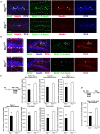
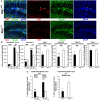
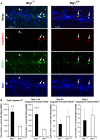
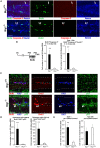
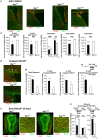
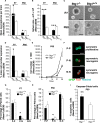

Similar articles
-
Physical exercise rescues defective neural stem cells and neurogenesis in the adult subventricular zone of Btg1 knockout mice.Brain Struct Funct. 2017 Aug;222(6):2855-2876. doi: 10.1007/s00429-017-1376-4. Epub 2017 Feb 28. Brain Struct Funct. 2017. PMID: 28247022
-
Fluoxetine or Sox2 reactivate proliferation-defective stem and progenitor cells of the adult and aged dentate gyrus.Neuropharmacology. 2018 Oct;141:316-330. doi: 10.1016/j.neuropharm.2018.08.023. Epub 2018 Aug 22. Neuropharmacology. 2018. PMID: 30142401
-
Transcriptome Analysis in a Mouse Model of Premature Aging of Dentate Gyrus: Rescue of Alpha-Synuclein Deficit by Virus-Driven Expression or by Running Restores the Defective Neurogenesis.Front Cell Dev Biol. 2021 Aug 17;9:696684. doi: 10.3389/fcell.2021.696684. eCollection 2021. Front Cell Dev Biol. 2021. PMID: 34485283 Free PMC article.
-
Control of the Normal and Pathological Development of Neural Stem and Progenitor Cells by the PC3/Tis21/Btg2 and Btg1 Genes.J Cell Physiol. 2015 Dec;230(12):2881-90. doi: 10.1002/jcp.25038. J Cell Physiol. 2015. PMID: 25967096 Review.
-
Interaction Between Neurogenic Stimuli and the Gene Network Controlling the Activation of Stem Cells of the Adult Neurogenic Niches, in Physiological and Pathological Conditions.Front Cell Dev Biol. 2020 Apr 7;8:211. doi: 10.3389/fcell.2020.00211. eCollection 2020. Front Cell Dev Biol. 2020. PMID: 32318568 Free PMC article. Review.
Cited by
-
Medulloblastoma or not? Crucial role in tumorigenesis of the timing of migration of cerebellar granule precursor cells, regulated by Nos2 and Tis21.Front Neurosci. 2013 Jan 24;6:198. doi: 10.3389/fnins.2012.00198. eCollection 2012. Front Neurosci. 2013. PMID: 23355800 Free PMC article. No abstract available.
-
Stem Cell Quiescence: Dynamism, Restraint, and Cellular Idling.Cell Stem Cell. 2019 Feb 7;24(2):213-225. doi: 10.1016/j.stem.2019.01.001. Cell Stem Cell. 2019. PMID: 30735649 Free PMC article. Review.
-
Genetic control of adult neurogenesis: interplay of differentiation, proliferation and survival modulates new neurons function, and memory circuits.Front Cell Neurosci. 2013 May 14;7:59. doi: 10.3389/fncel.2013.00059. eCollection 2013. Front Cell Neurosci. 2013. PMID: 23734097 Free PMC article.
-
Control of the Cell Cycle in Adult Neurogenesis and its Relation with Physical Exercise.Brain Plast. 2015 Oct 9;1(1):41-54. doi: 10.3233/BPL-150013. Brain Plast. 2015. PMID: 29765834 Free PMC article. Review.
-
Decoding the molecular, cellular, and functional heterogeneity of zebrafish intracardiac nervous system.Nat Commun. 2024 Dec 4;15(1):10483. doi: 10.1038/s41467-024-54830-w. Nat Commun. 2024. PMID: 39632839 Free PMC article.
References
-
- Arguello A. A., Harburg G. C., Schonborn J. R., Mandyam C. D., Yamaguchi M., Eisch A. J. (2008). Time course of morphine’s effects on adult hippocampal subgranular zone reveals preferential inhibition of cells in S phase of the cell cycle and a subpopulation of immature neurons. Neuroscience 157, 70–7910.1016/j.neuroscience.2008.08.064 - DOI - PMC - PubMed
LinkOut - more resources
Full Text Sources
Molecular Biology Databases
Research Materials
Miscellaneous

